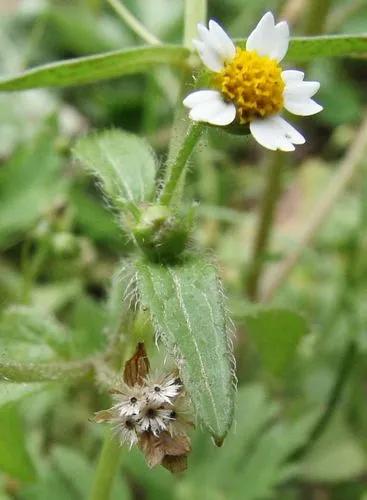Sinapis arvensis, the charlock mustard, field mustard, wild mustard or charlock, is an annual or winter annual plant of the genus Sinapis in the family Brassicaceae. It is found in the fields of North Africa, Asia and Europe. Pieris rapae, the small white butterfly, and Pieris napi, the green veined white butterfly are significant consumers of charlock during their larval stages.
Charlock Mustard Care
Sinapis arvensis



Sinapis arvensis reaches on average 20–80 centimetres (7.9–31.5 in) of height, but under optimal conditions can exceed one metre. The stems are erect, branched and striated, with coarse spreading hairs especially near the base. The leaves are petiolate (stalked) with a length of 1–4 centimetres (0.39–1.57 in). The basal leaves are oblong, oval, lanceolate, lyrate, pinnatifid to dentate, 4–18 centimetres (1.6–7.1 in) long, 2–5 centimetres (0.79–1.97 in) wide. The cauline leaves are much reduced and are short petiolate to sessile but not auriculate-clasping. It blooms from May to September, or May to August, in the UK.
The inflorescence is a raceme made up of yellow flowers having four petals.with spreading sepals. The fruit is a silique 3–5 cm long with a beak 1–2 cm long that is flattened-quadrangular. The valves of the silique are glabrous or rarely bristly, three to five nerved. The seeds are dark red or brown, smooth 1-1.5 mm in diameter.
This plant is useful.
How to get rid of: Common groundsel in the home garden and landscape is best controlled using cultural and mechanical methods. If these methods cannot be used, herbicides containing diquat or glyphosate will control growing plants in home landscape beds.
Only glyphosate can be used around edible crops and it will severely injure or kill any plant it touches. The sprayer tip should be shielded so that the spray does not contact any desirable plants, as either of these herbicides will injure many ornamental plants. There are no preemergent (before the plant emerges from the soil) chemical controls available for home use that are effective for controlling common groundsel.
How to Care for the Plant

Popularity

269 people already have this plant 59 people have added this plant to their wishlists
Discover more plants with the list below
Popular articles





